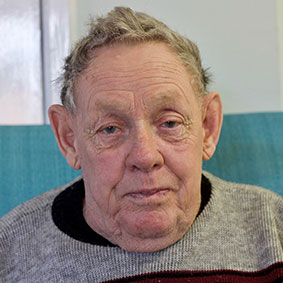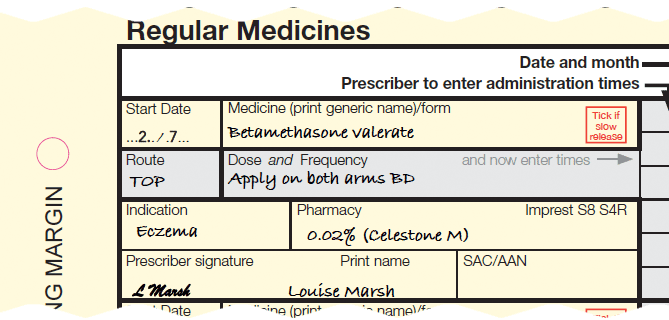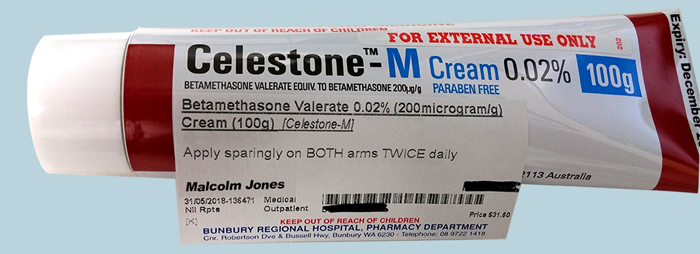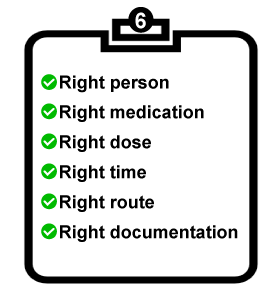Malcolm
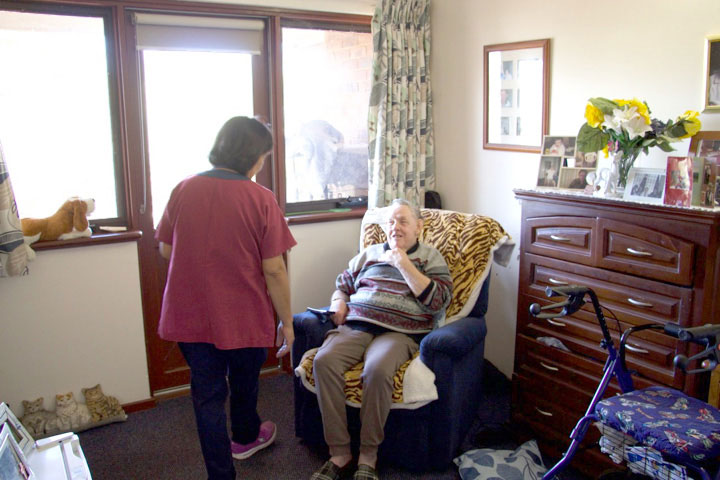
Jamie goes to see Malcolm.
Check for any signs of deterioration
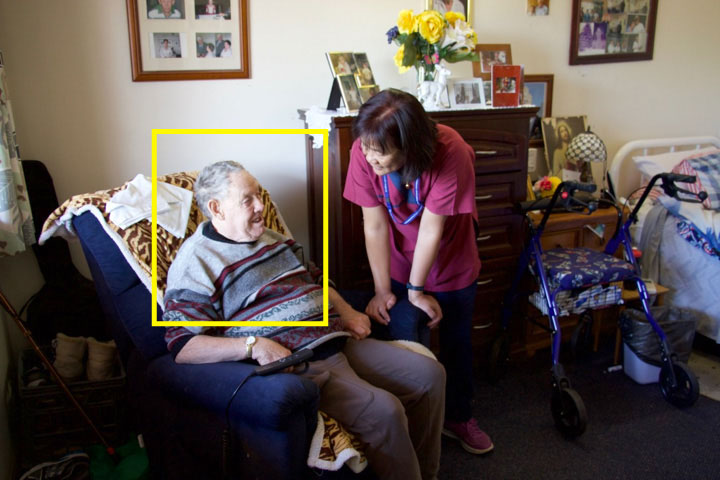
Jamie keeps an eye out for any changes to Malcolm's appearance or behaviour.
Click Malcolm to see how he responds.
Right person

Jamie checks Malcolm's photo and name on his identity form.
Click Malcolm to see how he responds.
Right time

Jamie checks Malcolm's medication order.
Click the folder to see the medication order.
How often does Malcolm's cream need to be applied?
Right medication
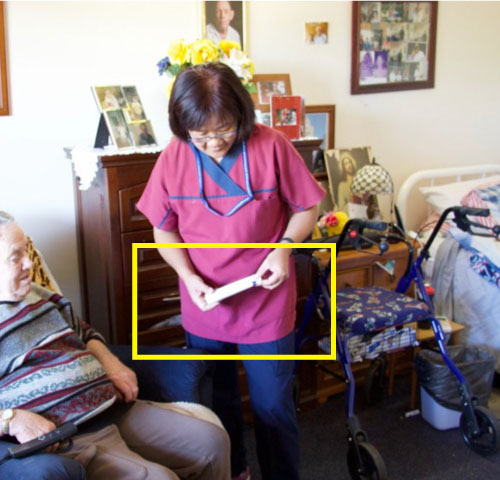
Jamie takes the cream from the locked drawer.
Click the tube of cream Jamie is holding.
Is this cream OK for Malcolm to use?
Transdermal medication types
Malcolm's steroid cream is called a transdermal medication. Click on the other types of transdermal medications to learn more about them.
What has Jamie forgotten?
Jamie puts on disposable gloves. What has Jamie forgotten?
Jamie performs hand hygiene and checks Malcolm's arms for any new or changing symptoms. Click Malcolm to see how he responds.
Check the site
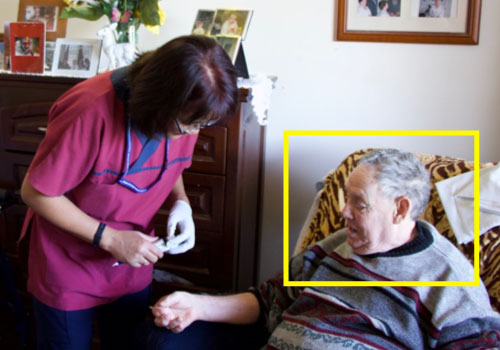
When NOT to apply topical medication
Do not apply topical medication if you notice any of these symptoms. Talk to the RN first. Click the images to show the description.
Right dose
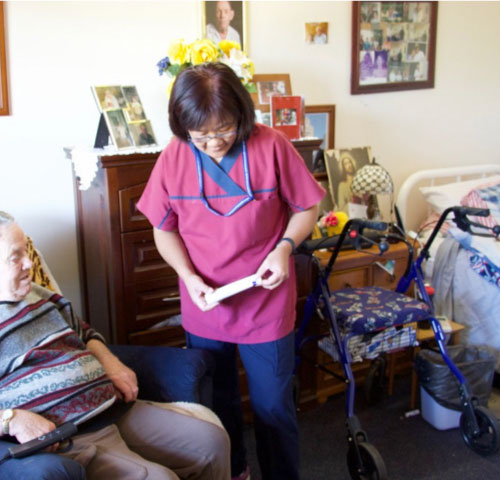
Jamie works out how much cream to apply to Malcolm's arms.
Which unit of measurement is used to measure the amount of required cream or ointment?
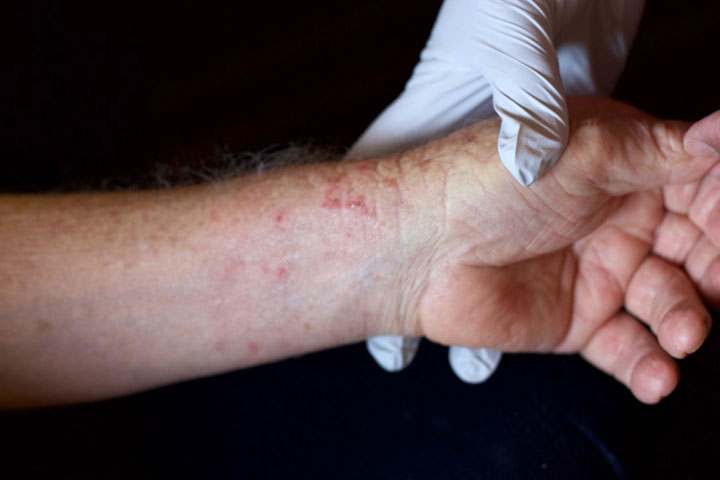
Jamie is now ready to apply the cream.
Step 1
Identify the correct area of the body.
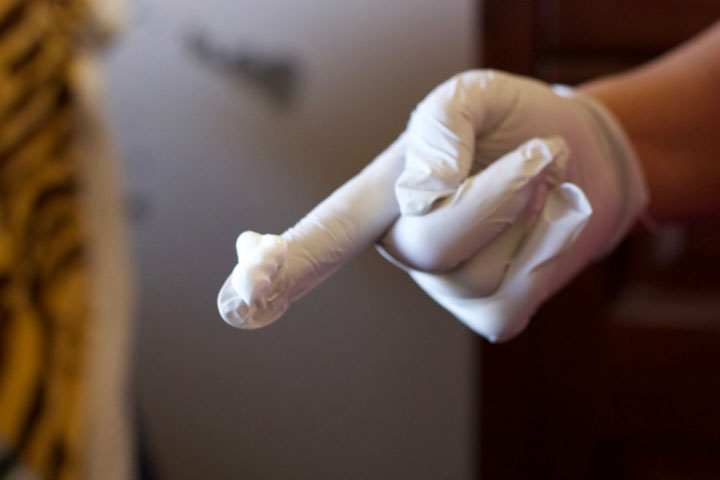
Three steps to assist with transdermal medication
Step 2
Squeeze the required amount of cream from the tube on to your finger or hand.
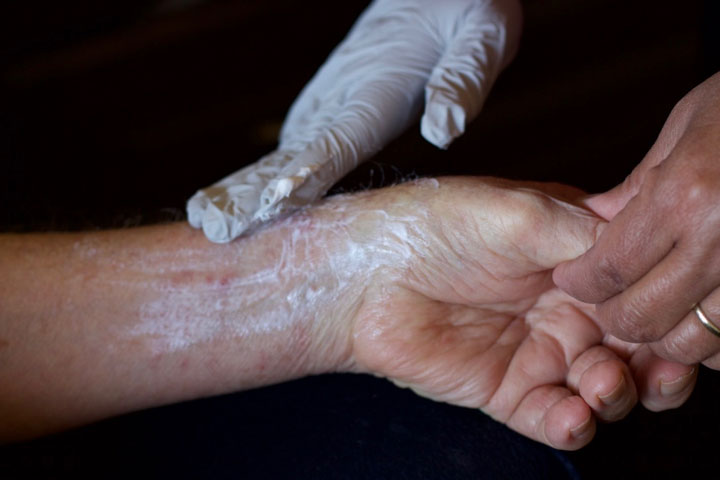
Three steps to assist with transdermal medication
Step 3
Apply the cream evenly on to the skin.
Right documentation
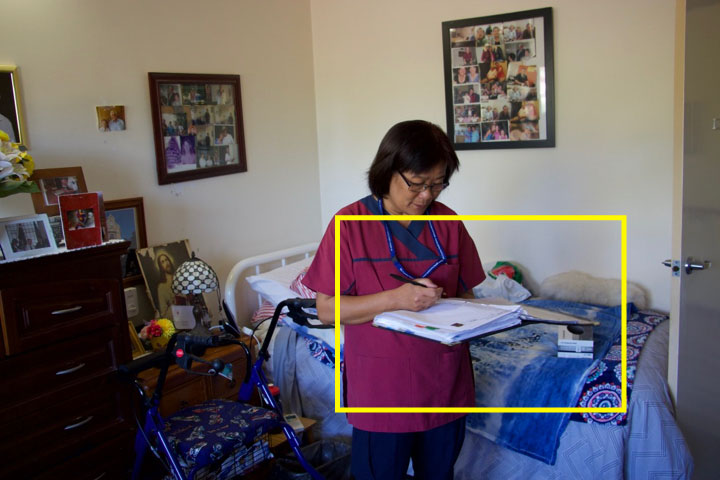
Jamie removes her gloves, performs hand hygiene again and signs the signing sheet.
Click the document to see where Jamie is signing it.
Finishing up
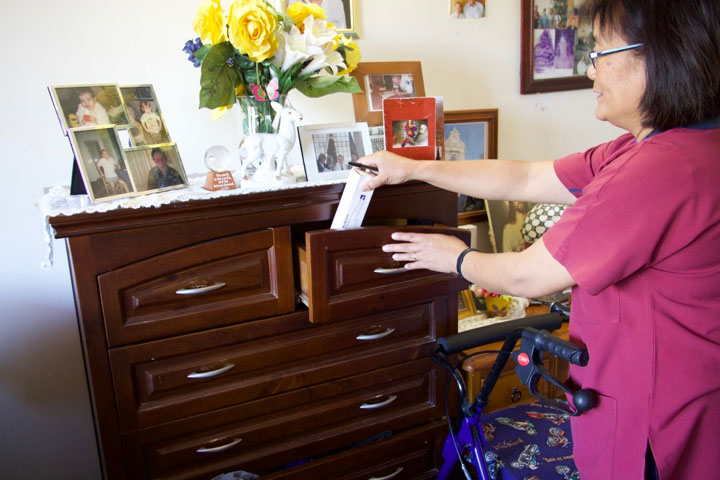
Jamie finishes up.
Jamie replaces the tube and performs hand hygiene again.
Storing items
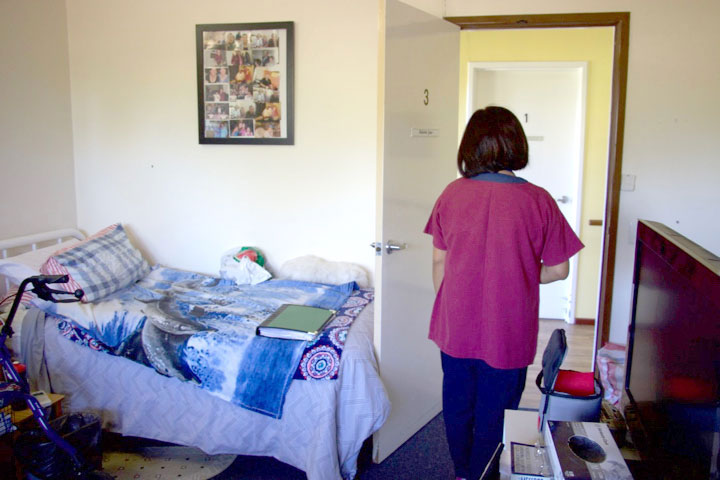
Jamie is about to leave the room.
Has Jamie forgotten something? Click on the item that she has forgotten.
Jamie leaves the room
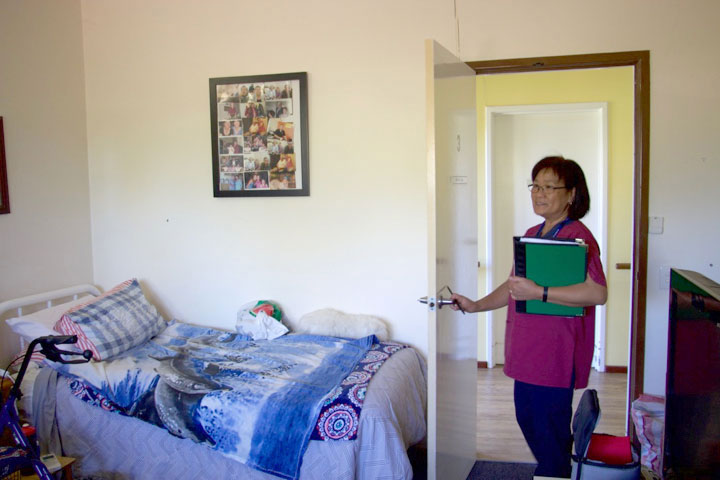
Jamie picks up the medication chart and says goodbye to Malcolm.
You are now ready to start your assessment for this case study.
Question 1
Where would you find the expiry date of Malcolm's cream?
Question 2
Check Malcolm's tube of medication again.
How much cream needs to be applied to his arms?
Question 3
What should you do with the medication charts after assisting a resident with their medication at a residential care facility?
Question 4
When should topical medication (such as cream or ointment) NOT be applied?
Question 5
Where should you put disposable gloves after you have used them to apply steroid cream?
Congratulations
Congratulations
You have successfuly completed Medication Assistance (For the Unregulated Health Care Worker) - Transdermal medication (MAURe EL2).
You can now close this tab and start Ear medication when you are ready.
You can now start the next module: Ear medication when you are ready.
You might also like to:
- Explore the resources and further reading;
- Complete the short evaluation of the module - your feedback is appreciated; or
- Launch and complete the reflective practice activity tool - your feedback is appreciated; or
- Restart this module
 Tips for creams and ointments
Tips for creams and ointments
